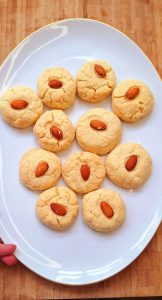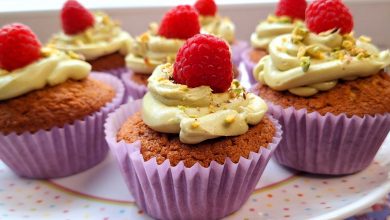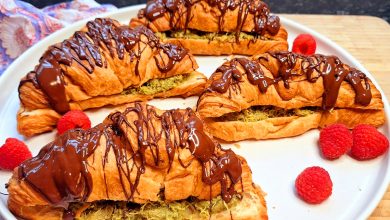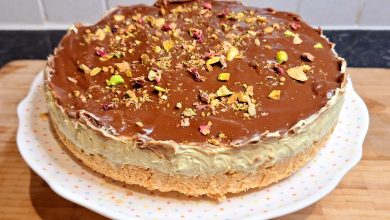Authentic Nan Khatai Recipe: Crisp, Buttery Indian Cookies (Easy & Delicious!)
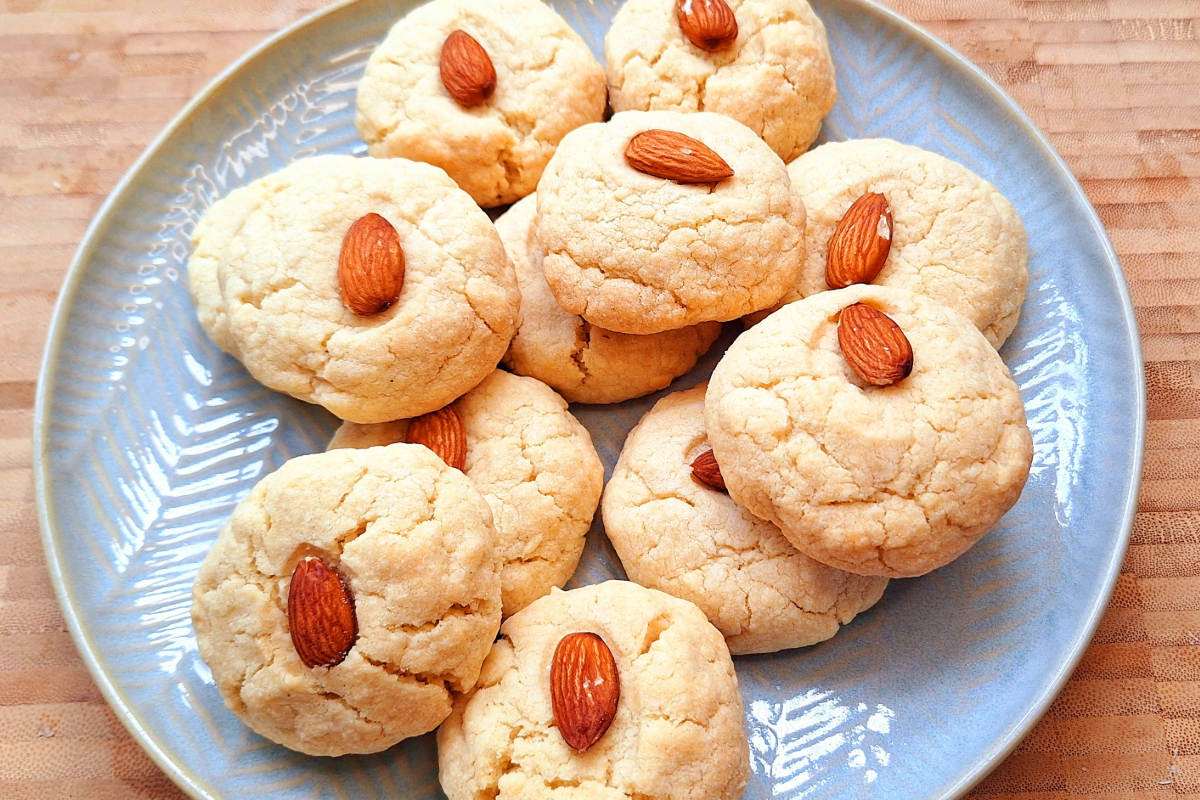
Introduction to this Nan Khatai Recipe
Nan Khatai, the delicate Indian shortbread cookie, is a melt-in-mouth treat that has charmed dessert lovers for generations. These golden, buttery biscuits get their irresistible texture from ghee (clarified butter) and a subtle fragrance from cardamom, making them the perfect accompaniment to chai or coffee.
Originating from the Mughal era, Nan Khatai has evolved into a beloved snack across India, Pakistan, and Bangladesh, often prepared during festivals like Diwali and Eid. What makes these easy melt-in mouth biscuits special is their simplicity—just a handful of pantry staples like flour, semolina, and powdered sugar come together to create magic.
Whether you’re a baking novice or an expert, this recipe guarantees crisp edges with a tender crumb. Plus, they’re endlessly customisable—add pistachios for crunch, cocoa for a chocolatey twist, or saffron for a royal touch. In this guide, we’ll walk you through the secrets to perfect Nan Khatai, from choosing the right ghee to baking them to golden perfection. Ready to bake a batch of these timeless treats? Let’s get started!
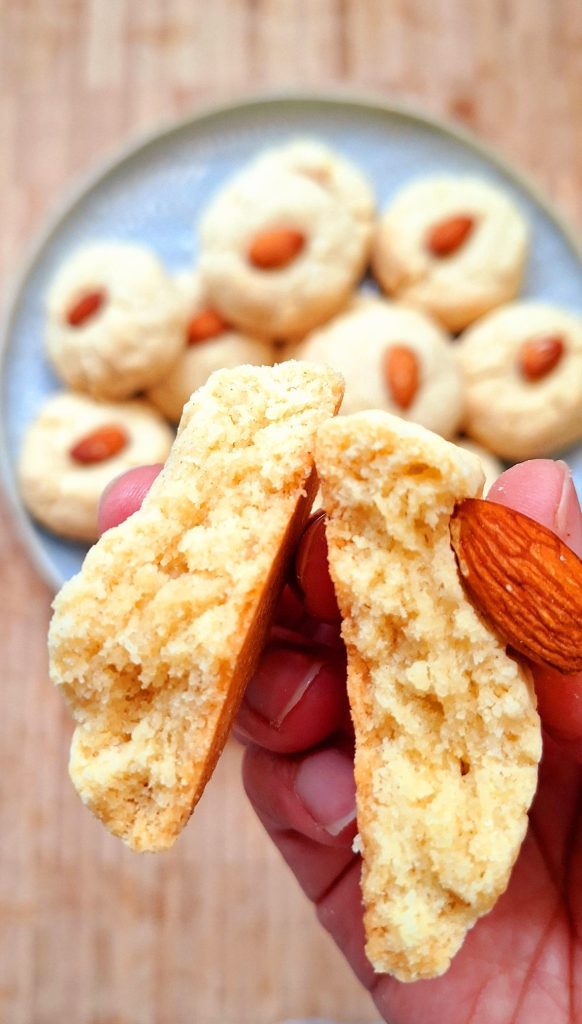
Why Make this Nan Khatai Recipe?
The first time I had these biscuits was at my khala’s (maternal aunt’s house). My cousins and I were feeling hungry, and we knew where our khala’s snack cupboard was (doesn’t everyone have a snack cupboard?!). We decided to raid the snack cupboard and we stumbled across khatai biscuits. Well after seeing my cousins eat these biscuits, eyes enlarged, I decided to join them. I loved them, sweet crumbly with nuts.
My cousins and I then decided to take another and another, we were eating so fast with excitement we started to get out of breath! Needless to say, the whole pack of khatai biscuits my aunt had purchased from her local South Asian supermarket were demolished by us. My cousins and I still laugh about this hyperventilating khatai eating session at my khala’s house, I always have the fondest memories of eating khatai with the family and with a good cup of doodh patti. Absolute heaven. This of course let me to figure out to make these delights myself, like most food, I like to know what’s going into these melt in mouth biscuits.
The ingredients are incredibly simple when making these easy melt-in-mouth biscuits. Most of them will already be in your cupboard, if not all of them. They are ready within 30 minutes, and this includes baking time. You can customise these Indian shortbread cookies to your taste add whatever nuts you prefer, even baking chocolate chips for the children or some lemon zest for a more sophisticated flavour.
When making up the dough balls, you can imprint your finger to leave a slight indentation in the cookie. When it bakes, you can cover this indentation with some strawberry or raspberry jam and add even a sprinkling of pistachios into the jam. The cookie with jam and nuts works beautifully together.
This nan khatai recipe is a great one to make when you know you are having people over, for example on on Eid, birthdays or even if you are just having your friends over for a cuppa. I first made these for my husband’s birthday, he and the children devoured them!

Cultural Significance of these Indian Shortbread Cookies
Nan Khatai’s rich history traces back to 16th-century Surat, where Dutch colonists introduced a biscuit called “Dutch naan.” Over time, Indian bakers adapted the recipe, replacing yeast with ghee and sugar, creating the crumbly, buttery cookie we know today. Its name—”Nan” (bread) and “Khatai” (biscuit)—reflects this cultural fusion.
Beyond its colonial roots, Nan Khatai became a staple in Indian households, especially during festive celebrations like Diwali, where it’s exchanged as a sweet gesture of hospitality. In Pakistan and Bangladesh, it’s a cherished accompaniment to evening tea, symbolizing warmth and tradition. The cookie’s enduring popularity lies in its versatility: street vendors sell it as an affordable snack, while gourmet versions feature edible silver leaf for weddings.
Today, Nan Khatai bridges generations, with grandmothers passing down secret recipes and food bloggers adding modern twists like matcha or orange zest. Its journey from Dutch bakeries to global tea tables is a testament to how food evolves while preserving its soul.

Ingredients
20-25 khatai (depending on size of your balls)
- 1 pinch of saffron
- 100 ml hot water
- 350 grams or 2.25 cups of plain flour
- 50 grams or 4 tbsp coarsely ground semolina or coarsely ground sooji
- 0.5 tsp baking powder
- 0.75 tsp cardamom powder
- 150 grams or 1 cup of ghee (Softened, not melted. Heat in the microwave for 10 seconds and check)
- 175 grams or 1 cup of icing sugar
- Whole almonds
Instructions
- Saffron water: In a cup add the water and the saffron, leave this to sit.
- Mix Dry Ingredients: Whisk flour, semolina, baking powder and cardamom.

3. Cream Ghee & Sugar: In a separate bowl, beat until light and fluffy. If the mixture is not coming together, the ghee is not soft enough. So give the bowl a quick blast in the microwave for 10 seconds.
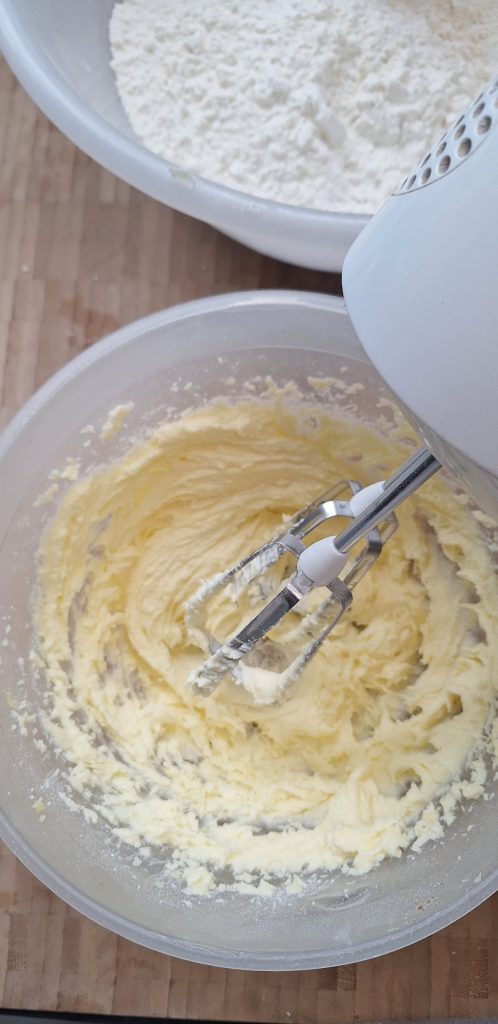
4. Combine: Add the ghee mixture to the flour bowl and gently mix together until it’s fully combined.
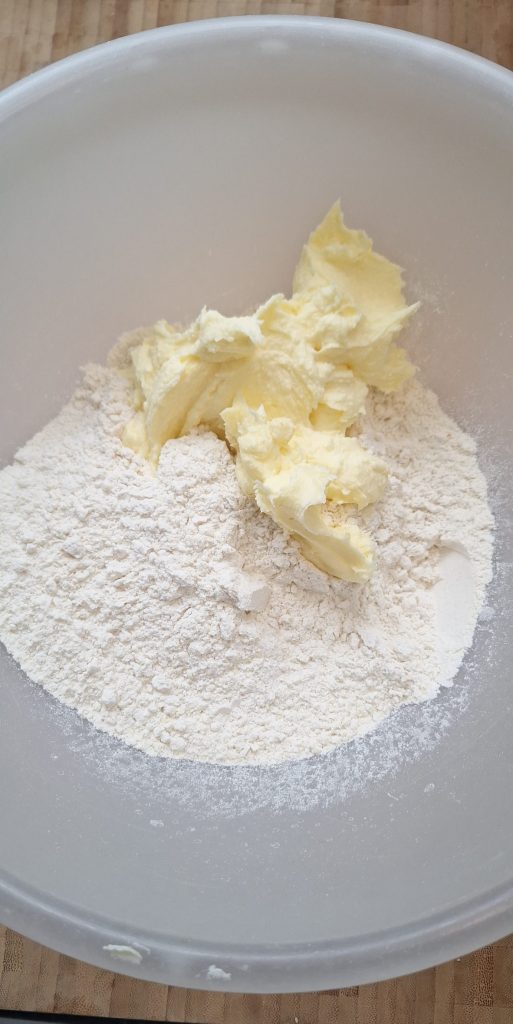
5. Add the saffron water in small splashes to the dough mixture, mix through by hand. Check the dough holds a finger print when squished. You may not need to use all the saffron water, if you are happy the dough is holding together, there’s no need to add any more saffron water.
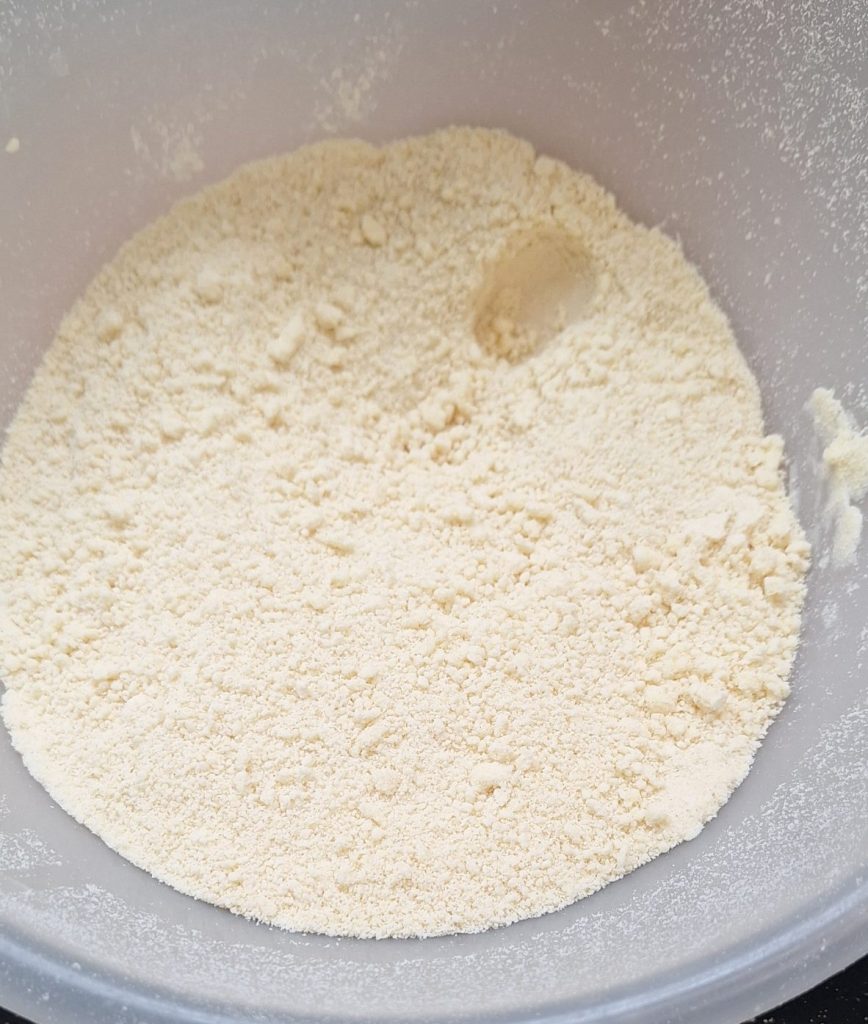
6. Shape: Roll into balls, flatten slightly, garnish with nuts, you may want to push the nuts into the balls gently.
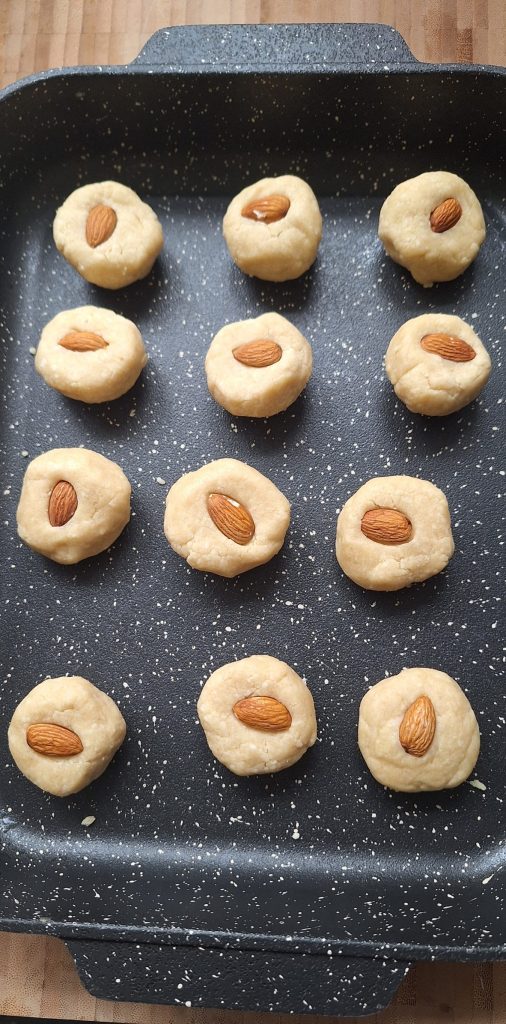
7. Bake: 160°C fan assisted oven for 16-18 minutes until golden.

8. Leave to cool fully before eating, the khatai biscuits will harden as they cool down.
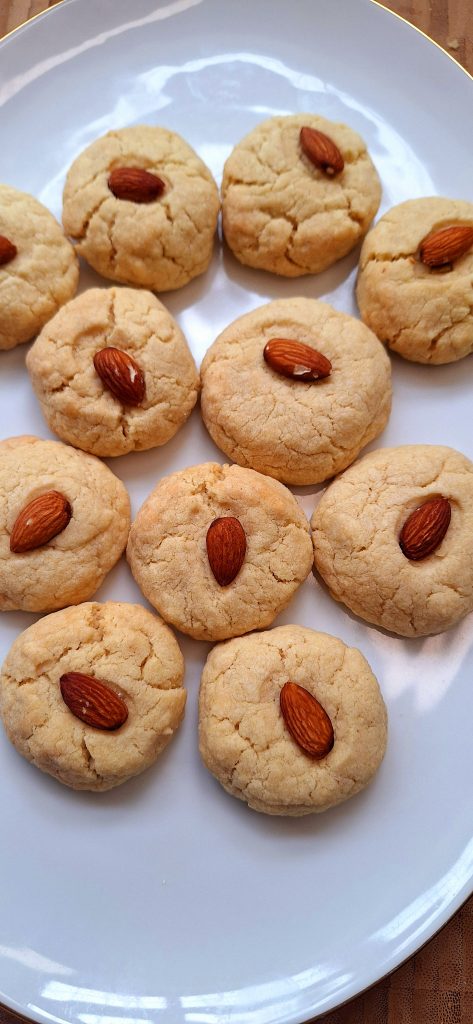
Expert Tips on making Indian Shortbread Cookies
Ghee Temperature: Must be soft but not melted. I give the ghee a quick blast in the microwave for 20 seconds. this softens without melting it. You can try 10 seconds at a time.
Consistency Check: Dough should leave fingerprints when pressed. Adding the warm water helps with this. The saffron is more of an optional add to the hot water, but it does really amplify the flavour of these gorgeous Indian shortbread cookies. The hotter the water, the faster the saffron infuses the water.
Cooling Time: They will be still be soft when removed from the oven. Let cool completely for crisp texture.
Variations on this Nan Khatai Recipe
Sugar: If you do not have icing sugar, use a food processor to blitz caster sugar until you get the consistency of icing sugar.
Vegan: Use coconut oil instead of ghee
Nutty: Add cashew or almond flour
Chocolate: Mix in cocoa powder
Pista: Use pistachio paste for green hue, reduce the saffron water you add to the dough as the pistachio paste will give you some of the additional moisture you need.
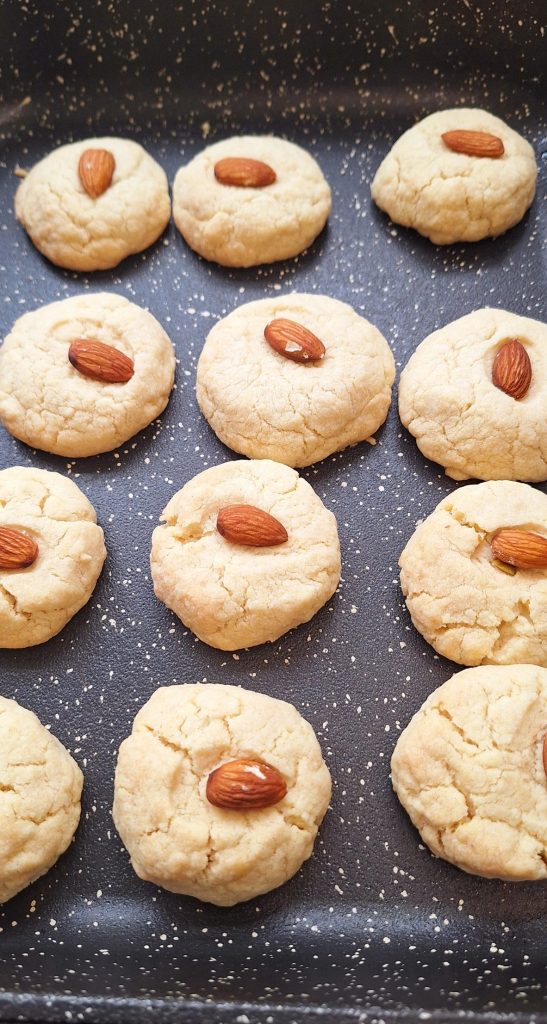
Serving Suggestions for this Nan Khatai Recipe
- With masala chai or coffee
- As edible gifts in decorative boxes
- With kulfi or ice cream for dessert
Healthier Twists on these Easy Melt- in Mouth Biscuits
- Substitute 50% flour with whole wheat
- Reduce sugar by 25%
- Use almond flour for gluten-free version
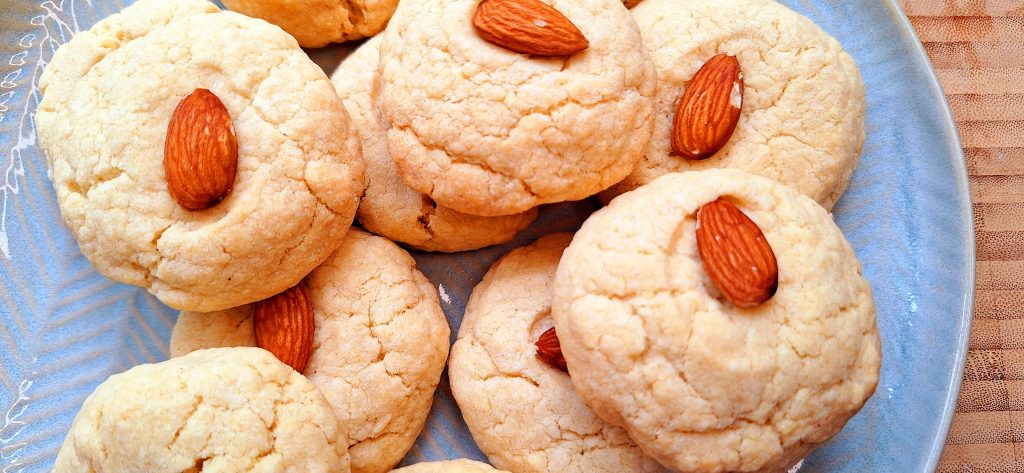
FAQs
Q: Why is my Nan Khatai hard?
A: Overbaking or too much flour causes hardness
Q: Can I use butter instead of ghee?
A: Yes, but ghee gives authentic flavour
Q: How long do they stay fresh?
A: 2 weeks in airtight container
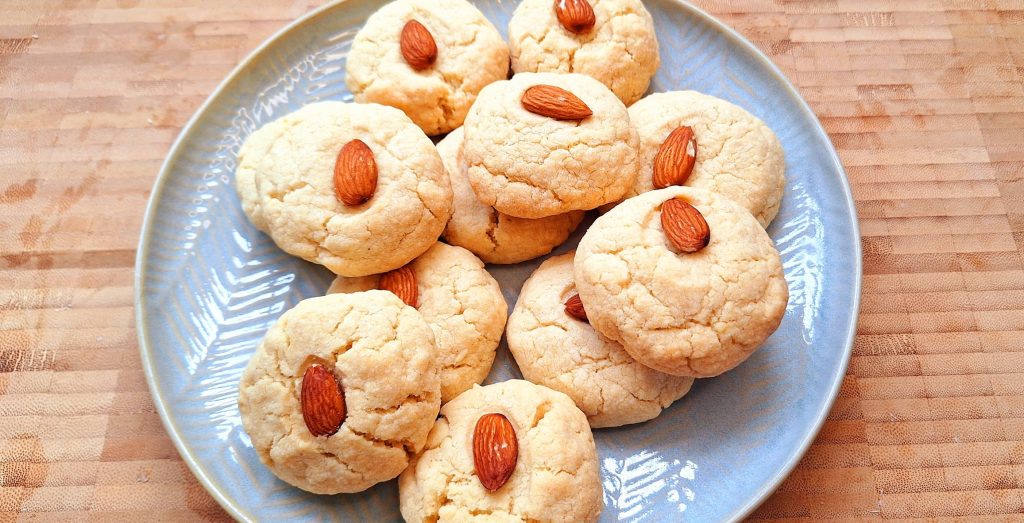
Conclusion
Nan Khatai is more than just a cookie—it’s a bite of history, a symbol of hospitality, and a canvas for creativity. With its crisp texture, aromatic cardamom, and rich ghee flavour, this humble biscuit has won hearts across continents. Whether you stick to the classic recipe or experiment with nuts, spices, or chocolate, the result is always irresistibly delicious. Now that you’ve uncovered its cultural roots and baking secrets, it’s time to create your own batch! Share your golden Nan Khatai photos with #NanKhataiLove and let us know your favourite variation. For more traditional recipes and baking tips, subscribe to our newsletter—your next culinary adventure awaits! Happy baking!
See my video on Youtube, Instagram or TikTok to see how to make this Nan Khatai Recipe.
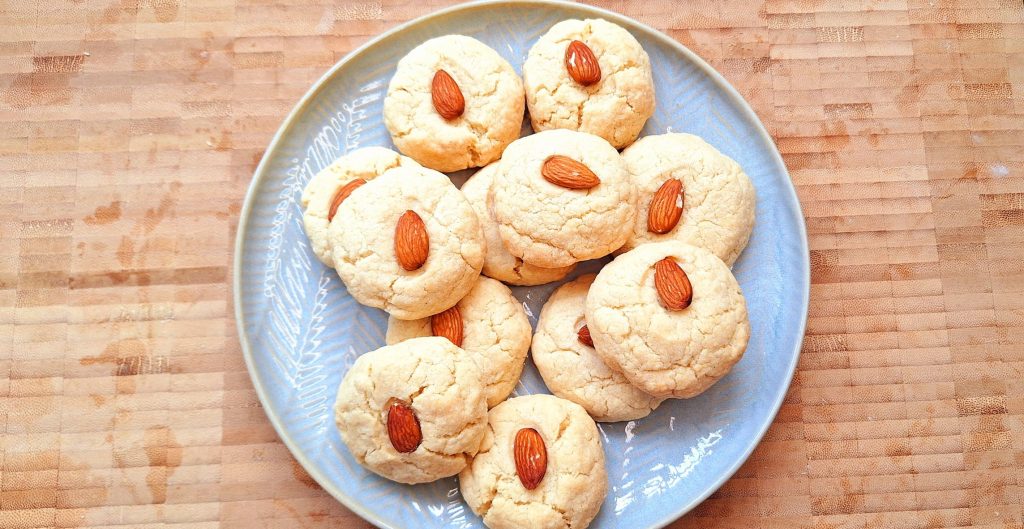
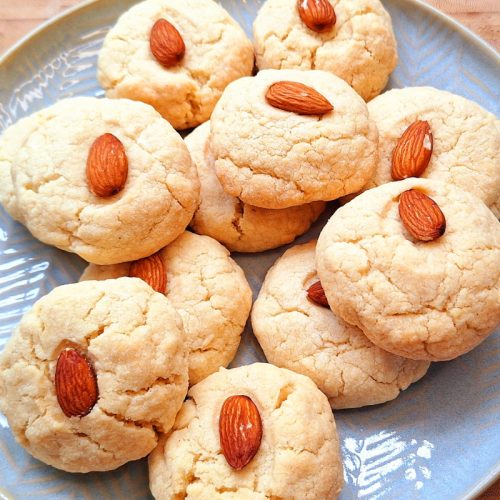
Authentic Nan Khatai Recipe: Crisp, Buttery Indian Cookies (Easy & Delicious!)
Ingredients
- 1 pinch saffron
- 100 ml boiling/hot water
- 350 grams plain flour 2.25 cups
- 50 grams coarsely ground semolina or coarsely ground sooji 4 tbsp
- 0.5 tsp baking powder
- 0.75 tsp cardamom powder
- 150 grams ghee (softened, not melted. Heat in the microwave for 10 seconds and check consistency) 1 cup
- 175 grams icing sugar 1 cup
- 25 whole almonds
Instructions
- In a cup add the water and the saffron, leave this to sit.
- In a large bowl, mix the flour, semolina, baking powder and cardamom.

- In a separate bowl, beat until light and fluffy. If the mixture is not coming together, the ghee is not soft enough. So give the bowl a quick blast in the microwave for 10 seconds.
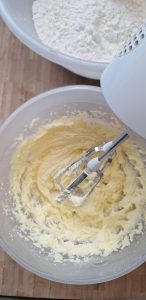
- Add the ghee mixture to the flour bowl and gently mix together until it's fully combined. I use the electric whisk on the lowest setting to do this.
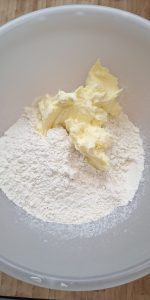
- Add the saffron water in small splashes to the dough mixture, mix through by hand. Check the dough holds a finger print when squished.You may not need to use all the saffron water, if you are happy the dough is holding together, there's no need to add any more saffron water.
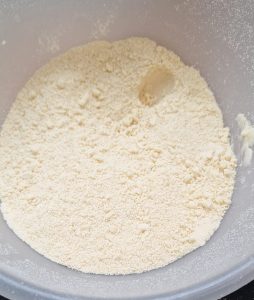
- Roll into balls, flatten slightly, garnish with nuts, you may want to push the nuts into the balls gently.
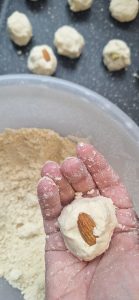
- Bake at 160°C fan assisted oven for 16-18 minutes until lightly golden.

- Leave to cool fully before eating, the khatai biscuits will harden as they cool down.
